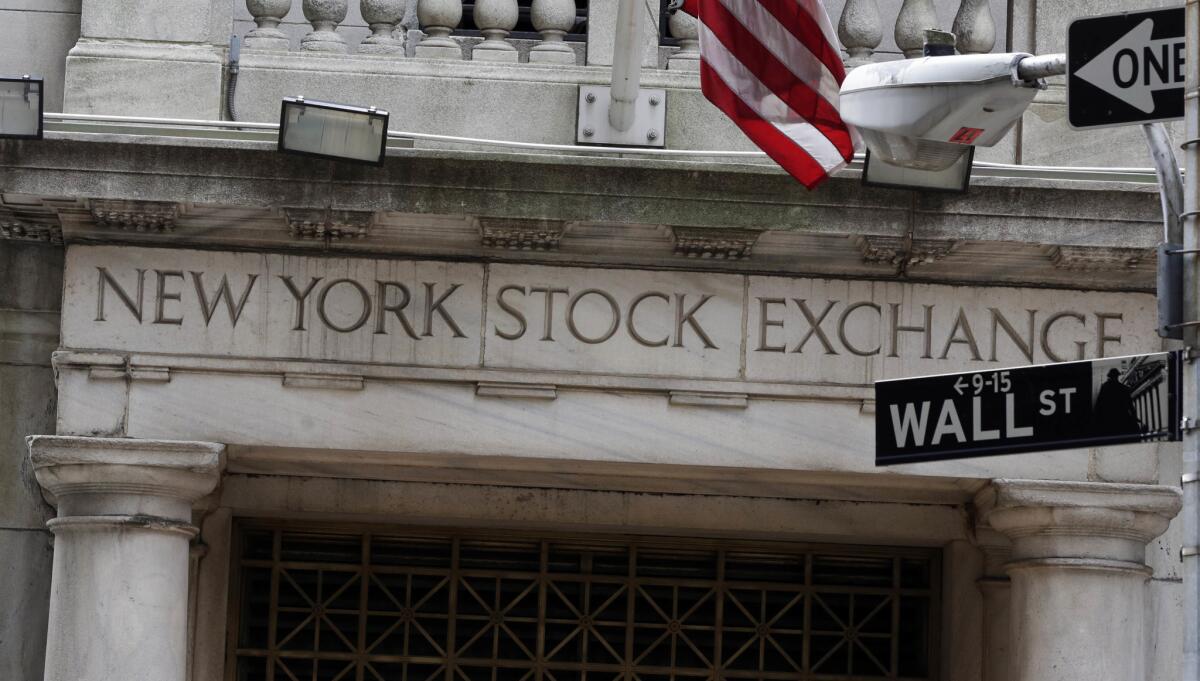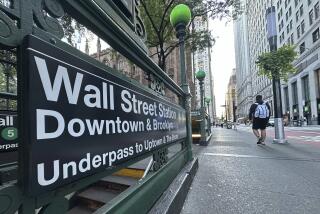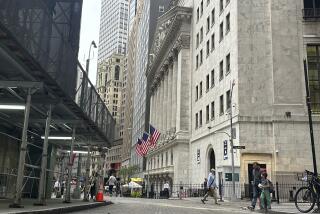Wall Street caps its best week since 1974 on latest Fed economy support

Wall Street closed out its best week in 45 years Thursday after the Federal Reserve launched its latest titanic effort to support the economy through the coronavirus outbreak.
The central bank announced programs to provide as much as $2.3 trillion in loans to households, local governments and businesses as the country tips into what economists say may be the worst recession in decades. It’s the latest unprecedented move by the Fed, which has rushed to ensure cash gets to parts of the economy that need it after markets got snarled by a rush of investors pulling cash out of the system.
The Standard & Poor’s 500 index closed up 39.84 points, or 1.4%, at 2,789.82 on Thursday. For the week, the S&P 500 jumped 12.1%, its best performance since late 1974. The Dow Jones industrial average added 285.80 points, or 1.2%, to 23,719.37, and the Nasdaq climbed 62.67 points, or 0.8%, to 8,153.58.
Markets will be closed for Good Friday.
Also on Thursday, the government announced 6.6 million Americans applied for unemployment benefits last week as layoffs sweep the nation. From mid-February through late March, investors sent stocks down by a third on expectations that a steep recession was imminent, before the economy really began to crunch.
In the last few weeks, investors have sent the market back up more than 20% after promises of massive aid from the Fed, other central banks and governments around the world, even as evidence piles up that the recession fears were prescient. This week, some investors have begun to look ahead to the economy possibly reopening amid signs the outbreak may be peaking or plateauing in several of the world’s hardest-hit areas.
”The market is solely focused on the number of cases,” said Quincy Krosby, chief market strategist at Prudential Financial. “The question is when can the restrictions be lifted? That’s what the market is focused on: When does America open up for business again?”
Many professional investors have been skeptical of the rally, saying there is still too much uncertainty. They say predictions for a relatively quick economic rebound are overly optimistic, and the head of the International Monetary Fund said Thursday the global economy is set for its deepest recession since the Great Depression.
Although hopes are building that a plateau may be arriving for infections in several hot spots, it’s not assured. In the meantime, businesses continue to shut down and 1 in 10 U.S. workers have lost their jobs in the last three weeks.
The market’s big gains this week have been somewhat tentative. On Tuesday, the S&P 500 charged to an early 3.5% gain before it disappeared in the final minutes of trading. On Thursday, the index nearly gave up all of an early 2.5% gain, paring it down to 0.5% before climbing again in the last hour of trading.
Such volatility has become routine in markets at the end of each week recently.
The afternoon’s fade also coincided with another abrupt downdraft in the price of oil. Benchmark U.S. crude oil fell $2.33, or 9.3%, to $22.76 a barrel after being above $28 earlier on speculation that big oil producers were set to announce a sharp cutback in production. Brent crude fell $1.36, or 4.1%, to $31.48 a barrel.
The yield on 10-year Treasurys fell five basis points to 0.72%. Gold jumped 2.1% to $1,684.38 an ounce, the highest in more than seven years.
The Fed’s immense programs announced Thursday touch far-reaching corners of lending markets, and if they continue for the long term, they could eventually lead to market bubbles.
But in the short term, “what the Fed is doing is great and helping markets function and providing liquidity so investors can do what they need [and] want to do,” said Warren Pierson, deputy chief investment officer at Baird Advisors.
The programs even include bonds for companies that have weak enough credit ratings to be called “junk,” or speculative grade.
Worries have been high about the ballooning amount of corporate debt concentrated at the bottom edge of high-quality “investment grade” bonds. The looming recession could push a lot of that into junk status, which would force many investors to sell it because they’re required to hold only investment-grade bonds. A run from such bonds could trigger sell-offs in other areas of the market and lead to even more pain across the economy.
Also in the Fed’s programs are municipal bonds, which allow cities and state governments to raise cash.
More to Read
Inside the business of entertainment
The Wide Shot brings you news, analysis and insights on everything from streaming wars to production — and what it all means for the future.
You may occasionally receive promotional content from the Los Angeles Times.










